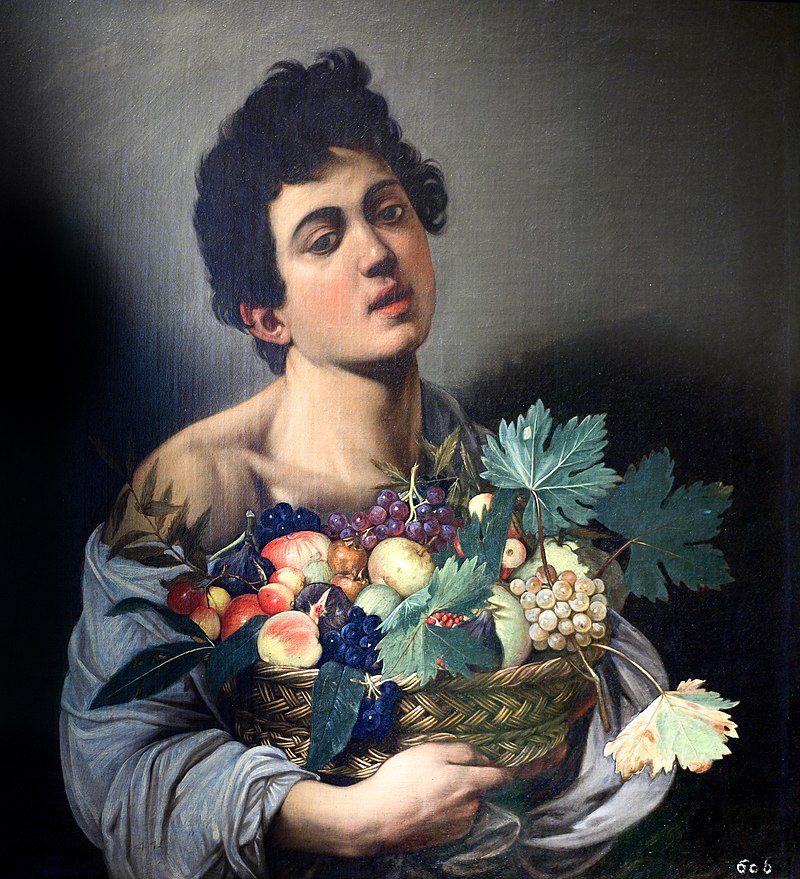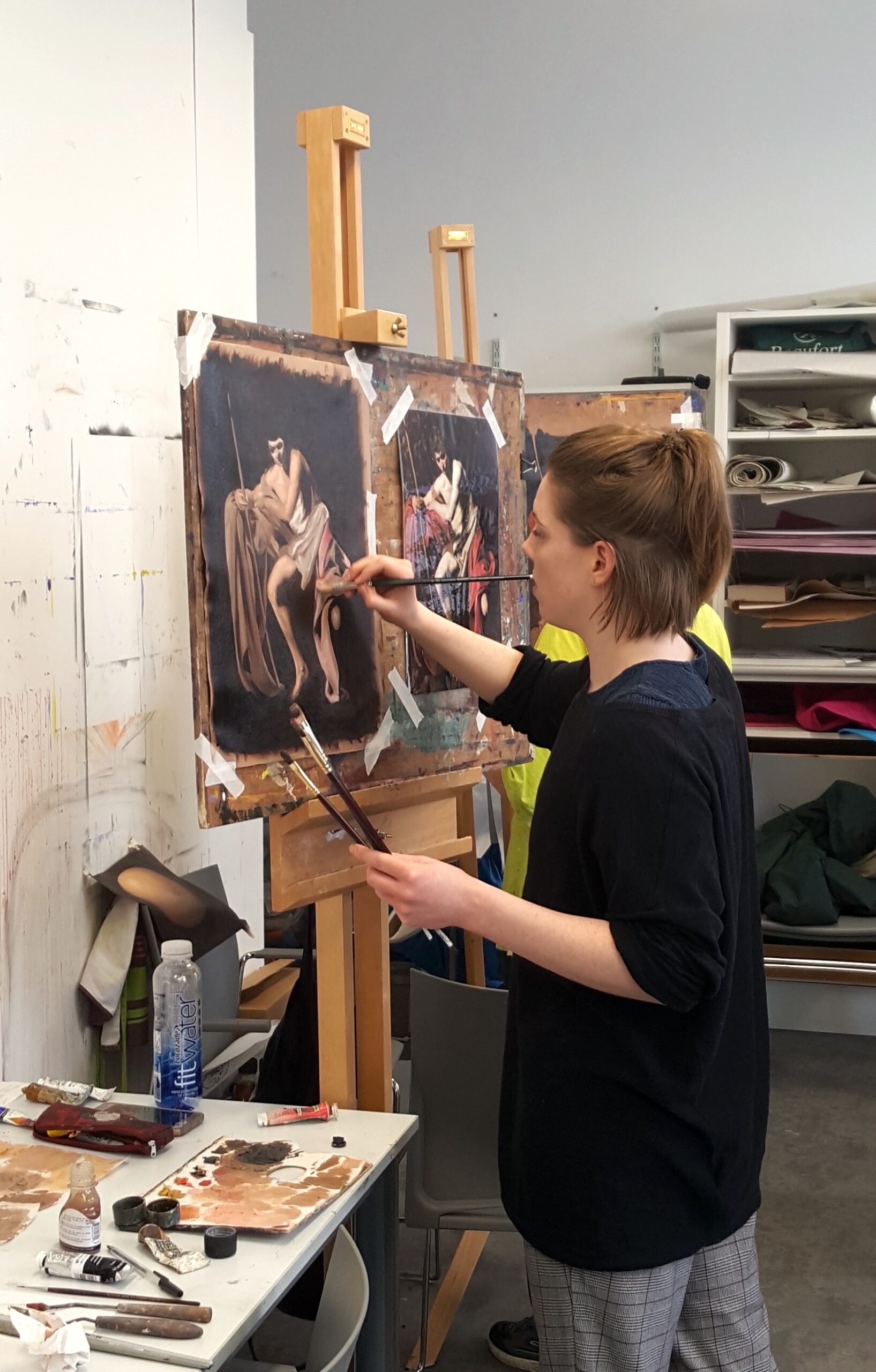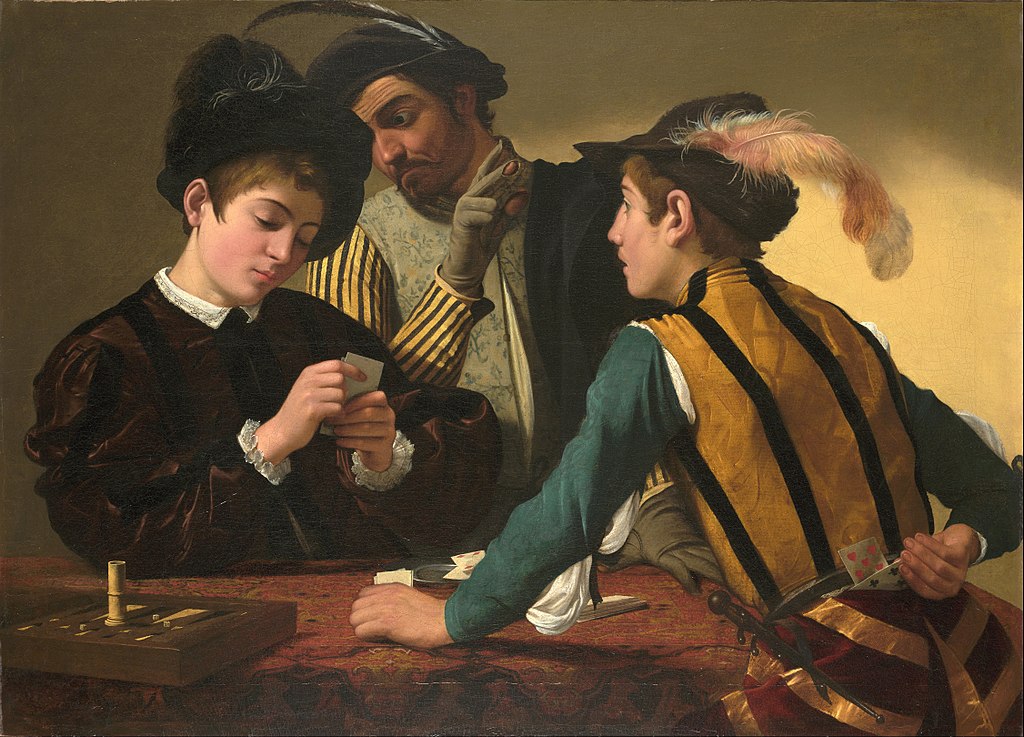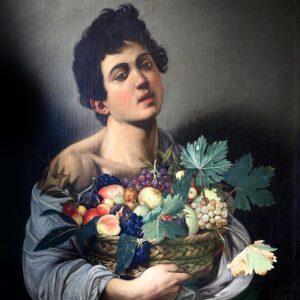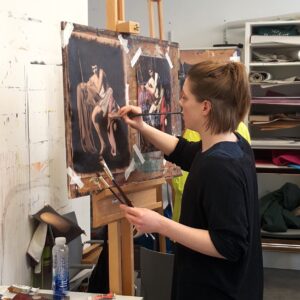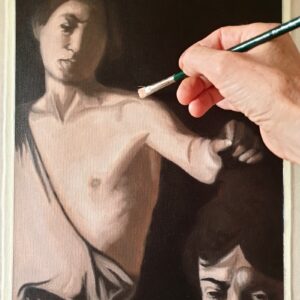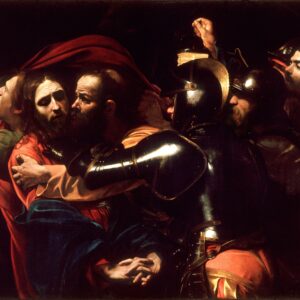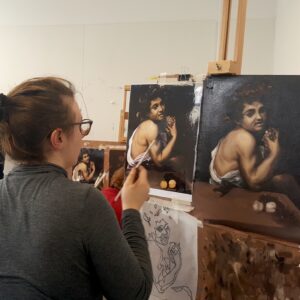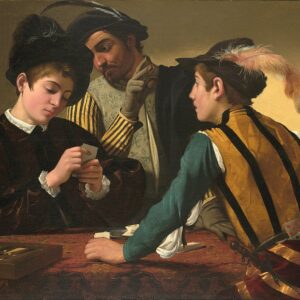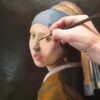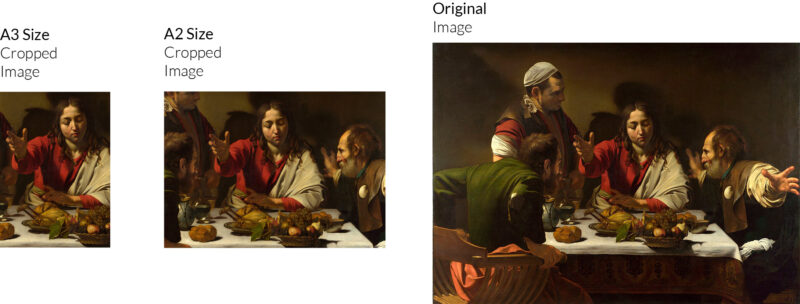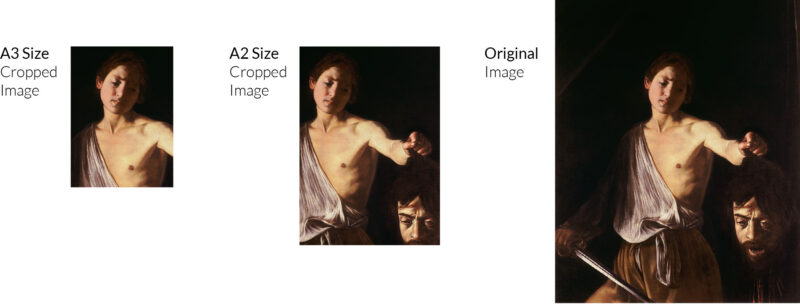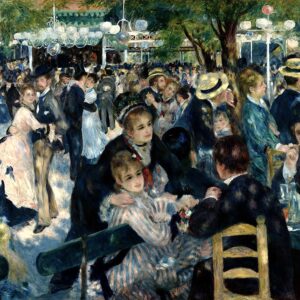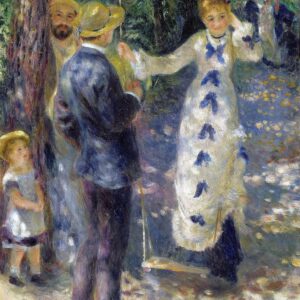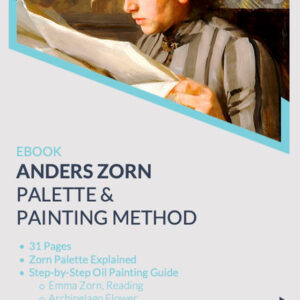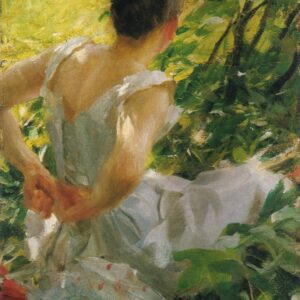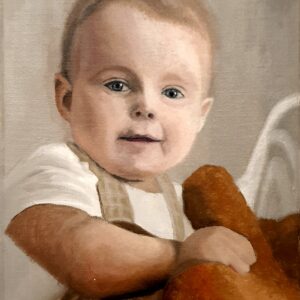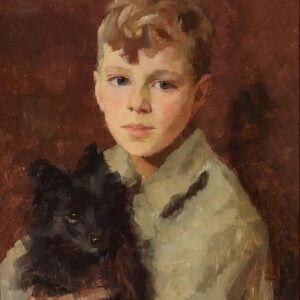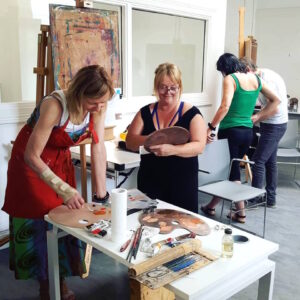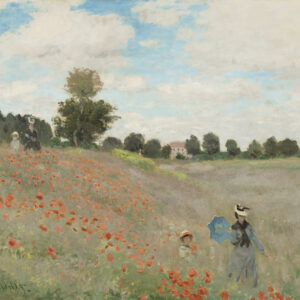Caravaggio – Old Masters Painting Online Course
€180.00
Live-Streaming & Recorded 6-WEEK ONLINE COURSE
Starting Thursday 14th November 2024
Class Time: Thursdays 10am-12 noon (UTC+1) from 14th November to 19th December 2024
Medium: Oil Paint
Format: Live Streaming Zoom Class & Video Recording
Level: All levels
All online classes are recorded and saved for the duration of the course module, so you can replay and watch at any time from one week to the next!
In this 6-week course, we will discover Caravaggio’s (1571-1610) painting methods and techniques, and how he combined close physical observation with the dramatic use of chiaroscuro by copying and reproducing a selection of his paintings.
Caravaggio vividly expressed crucial moments and scenes, often featuring violent struggles. He worked rapidly with live models, preferring to forgo drawings and work directly onto the canvas. His inspiring effect on the new Baroque style that emerged from Mannerism was profound. His influence can be seen directly or indirectly in the work of Peter Paul Rubens, Jusepe de Ribera, Gian Lorenzo Bernini, and Rembrandt.
Each class will include demonstrations – guiding you in detail through the painting process, and discussion about oil painting method and techniques.
See full description, what paintings you will copy, and what art materials you’ll need in the tabbed sections below.
In stock
Chiaroscuro was practised long before Caravaggio arrived on the scene, but it was he who made the technique a dominant stylistic element, darkening the shadows and transfixing the subject in a blinding shaft of light.
Sources state that Caravaggio did not draw but painted directly in color by copying from life: the frequent pentimentos during the work documented by X-ray investigations seem to confirm this fact.
He worked at great speed, from live models, scoring basic guides directly onto the canvas with the end of the brush handle; very few of Caravaggio’s drawings appear to have survived, and it is likely that he preferred to work directly on the canvas, an unusual approach at the time.
This course refers to the most recent scholarly research and scientific analyses of Caravaggio’s, including The Taking of Christ (1602) at the National Gallery of Ireland. Detailed notes will be given, which include historical and background information about the artist and his paintings.
Master Copy Paintings
Copying master paintings is one of the best ways to improve your painting skills, and painting the nude figure in particular offers the greatest scope for understanding gesture, capturing proportion, turning form, and mastering the effects of subtle colour.
You will copy at least ONE, if not two, of the following paintings, depending on how much time you have available. But a step-by-step guide as well as demonstrations on how to copy all three paintings will be given. Each painting is representative of the three main periods in his career.
BOY WITH A BASKET OF FRUIT (c.1593-95)
SUPPER AT EMMAUS (c.1602)
DAVID WITH THE HEAD OF GOLIATH (c.1610)
Caravaggio’s Painting Methods & Techniques
Incised lines, brushstrokes to indicate forms broadly (‘abbozzo’) and the use of live models to provide the pose of each figure are characteristic of Caravaggio’s working practice.
Starting the painting on the canvas without any preparatory drawing, we will follow Caravaggio’s first steps in grisaille painting, which make no use of colour, and instead use only monochrome tones (usually of grey, hence the French, “gris” in “grisaille”). This technique enables you to learn how to mix, understand and apply values and render form.
The key elements of Italian Renaissance into Baroque painting will be explained in a sequence of simple and logical steps:
- Applying a toned ground or imprimatura
- Making accurate measurements and proportions, and emphasising a good sense of gesture using the dry-brush method
- Delineating light and shadow
- Creating a ‘dead colour’ layer
- Using the full palette to develop the large and medium forms of the first painting
- Rendering the smaller forms and details of the second painting
- Glazing, and paying close attention to edge quality
Throughout the course, you will be shown many time-honoured techniques used to create a realistic painting in oils. You will learn how to organise your palette and mix colours, including realistic skin tones, accurately and economically. Other concepts and techniques will be explained, including:
- Chiaroscuro, sfumato and impasto
- Blending, handling transitions, and edge quality
- Glazing and the ‘fat-over-lean’ principle
- Caring for brushes
- Understanding and utilising solvents and mediums
Included
Included on this course:
- Live demonstrations
- Weekly recorded class (available for the duration of the course module)
- Detailed study notes available to download from Google Drive
- Digital reference images
Materials List
This course is suitable for artists at all levels. Please download materials list below.
Download Materials ListTerms & Conditions
Please read carefully before enrolling and paying for this course. By paying for this course you are agreeing to the terms and conditions below:
OIL PAINTS
Oil paints, solvents and mediums (such as mineral spirits, turpentine and linseed oil) will be used on this course, and these have a small and safe degree of toxicity but can emit strong fumes, which may cause headaches, drowsiness and skin irritations.
FEES, CANCELLATIONS & REFUNDS
Fees are non-refundable and non-transferrable. Adrian Cooke Artist reserves the right to cancel this course at any time if the minimum number of students required is not reached. In such cases, your fee will be fully refunded.
Reviews
Adrian is an inspirational and knowledgable teacher, the practicalities of equipment was explored along with emphasis on colour theory. I have done a few courses with Adrian online and I have found that he is always there to offer support and answer questions with detailed suggestions and practical advice. I look forward to more classes with Adrian.
– Anne
Terrific course. Great instructions and guidance. Strongly recommend.
– Ann
Related products
Ebooks
Studio Courses
Studio Courses
Studio Courses


